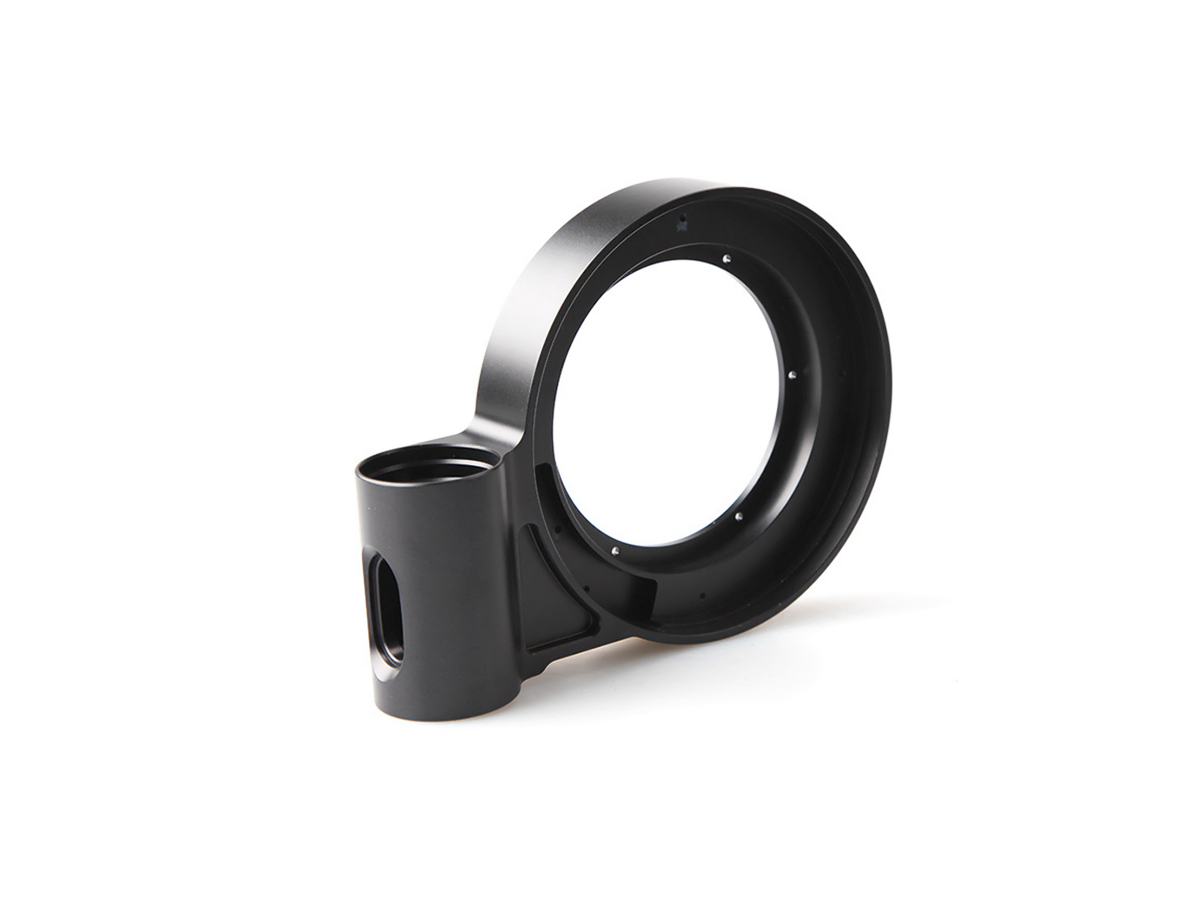Aluminum Machining in Robotics: Enhancing Performance and Durability
Introduction
The robotics industry demands materials that ensure lightweight structures, high strength, and consistent reliability. Aluminum alloys, especially 6061-T6 and 7075-T6, offer significant advantages, including excellent machinability, a superior strength-to-weight ratio, and corrosion resistance, making them ideal for robotic arms, joints, chassis, and precision motion components.
Advanced CNC machining processes have transformed the fabrication of aluminum robotic components. High-precision CNC machining allows intricate part geometries, tight dimensional tolerances, and enhanced surface finishes, significantly boosting robotic equipment's operational performance, efficiency, and overall durability.
Aluminum Alloys for Robotic Components
Material Performance Comparison
Material | Tensile Strength (MPa) | Yield Strength (MPa) | Density (g/cm³) | Typical Applications | Advantage |
|---|---|---|---|---|---|
310 | 276 | 2.70 | Robotic frames, structural arms | Lightweight, excellent machinability | |
570 | 505 | 2.81 | High-stress joints, precision gears | Superior strength, high fatigue resistance | |
470 | 325 | 2.78 | Lightweight brackets, structural components | Excellent fatigue performance, strength-to-weight | |
310-340 | 260-290 | 2.71 | Robotic mounts, housings | Good weldability, corrosion resistance |
Material Selection Strategy
Selecting aluminum alloys for robotic parts requires precision and consideration of functional and mechanical demands:
Robotic frames and structural arms demanding good strength (~310 MPa tensile), excellent machinability, and lightweight properties benefit significantly from Aluminum 6061-T6.
High-stress robotic joints, precision gears, and components requiring maximum mechanical strength (570 MPa tensile) and exceptional fatigue resistance are best produced from Aluminum 7075-T6.
Structural brackets and robotic framework parts need excellent fatigue resistance (470 MPa tensile) and strength-to-weight optimization. Choose Aluminum 2024 for increased durability under repetitive stress.
Housings, mounts, and other parts requiring robust corrosion resistance and excellent weldability benefit from Aluminum 6082 for enhanced reliability and ease of manufacturing.
CNC Machining Processes
Process Performance Comparison
CNC Machining Technology | Dimensional Accuracy (mm) | Surface Roughness (Ra μm) | Typical Applications | Key Advantages |
|---|---|---|---|---|
±0.02 | 1.6-3.2 | Basic frames, mounting plates | Economical, reliable | |
±0.015 | 0.8-1.6 | Rotational joints, brackets | Improved precision, fewer setups | |
±0.005 | 0.4-0.8 | Complex joints, precision parts | High precision, excellent finishes | |
±0.003-0.01 | 0.2-0.6 | Micro-components, intricate robotics parts | Maximum accuracy, complex geometries |
Process Selection Strategy
Choosing CNC machining processes for robotic aluminum components depends on complexity, precision, and functional demands:
Simple robotic components and basic structural frames needing standard precision (±0.02 mm) effectively use 3 Axis CNC Milling, providing cost efficiency and reliable accuracy.
Rotational components, such as articulated joints or moderate-complexity brackets requiring enhanced accuracy (±0.015 mm), leverage 4 Axis CNC Milling to optimize setups and improve precision.
Highly detailed robotic joints, sophisticated precision components demanding tight tolerances (±0.005 mm), and fine surface finishes (Ra ≤0.8 μm) are ideally fabricated with 5 Axis CNC Milling.
Critical micro-components and intricate robotic parts requiring extreme precision (±0.003 mm) and complex designs utilize Precision Multi-Axis CNC Machining for optimal accuracy and reliability.
Surface Treatment
Surface Treatment Performance
Treatment Method | Corrosion Resistance | Wear Resistance | Hardness Level | Typical Applications | Key Features |
|---|---|---|---|---|---|
Excellent (≥800 hours ASTM B117) | Moderate-High | HV350-500 | Robotic frames, joints | Durable corrosion protection, improved aesthetics | |
Exceptional (>1000 hours ASTM B117) | High | HV500-700 | High-wear joints, gears | Superior hardness, excellent wear resistance | |
Excellent (≥600-800 hours ASTM B117) | Moderate-High | HV200-400 | External robotic parts, casings | Attractive finish, corrosion resistant | |
Excellent (≥800 hours ASTM B117) | Very High | HV500-800 | Precision joints, bearing surfaces | Enhanced hardness, friction reduction |
Surface Treatment Selection
Surface treatments for robotic aluminum components require precise alignment with durability, wear, and environmental demands:
Robotic frames, arms, and standard joints needing excellent corrosion resistance (≥800 hours ASTM B117) and moderate surface hardness (~HV350-500) choose standard Anodizing for reliable protection.
High-wear robotic joints, gears, and other precision parts demanding exceptional surface hardness (HV500-700) and superior wear resistance benefit significantly from Hard Anodizing.
Visible external components and robotic casings requiring corrosion resistance, durability (≥600-800 hours ASTM B117), and aesthetic appeal rely on Powder Coating for attractive, durable finishes.
Precision joints, bearings, and critical surfaces are subject to frequent movement and friction, demanding enhanced hardness (HV500-800) and friction reduction. They utilize Electroless Nickel Plating for optimal performance.
Quality Control
Quality Control Procedures
Precise dimensional inspection using Coordinate Measuring Machines (CMM) and optical comparators.
Surface roughness assessment with advanced profilometers.
Mechanical testing of tensile and yield strength according to ASTM standards.
Corrosion resistance verification (ASTM B117 Salt Spray Test).
Non-destructive testing (NDT), including ultrasonic inspection, to identify internal defects.
Comprehensive documentation adhering to ISO 9001 standards specific to robotics manufacturing.
Industry Applications
Aluminum Component Applications
Lightweight robotic arms and structural frameworks.
High-strength precision gears and articulated joints.
Robotic chassis, casings, and external protective housings.
Custom robotic mounts and motion-control components.
Related FAQs:
Why is aluminum widely used in robotic components?
How does precision CNC machining improve robotics performance?
Which aluminum alloys are optimal for high-performance robotics applications?
What surface treatments ensure durability of aluminum robotic parts?
What quality standards apply to CNC-machined robotic aluminum components?

